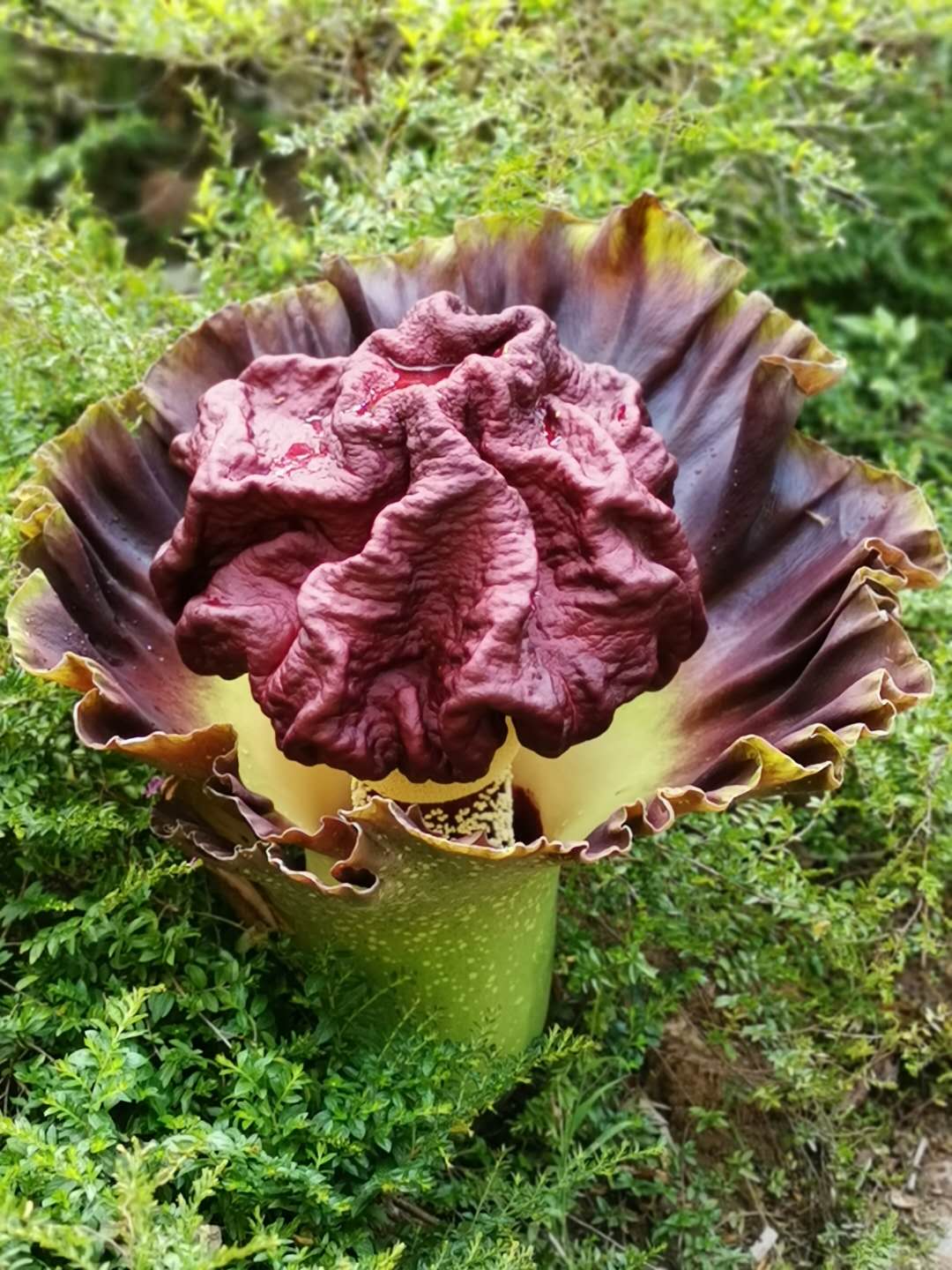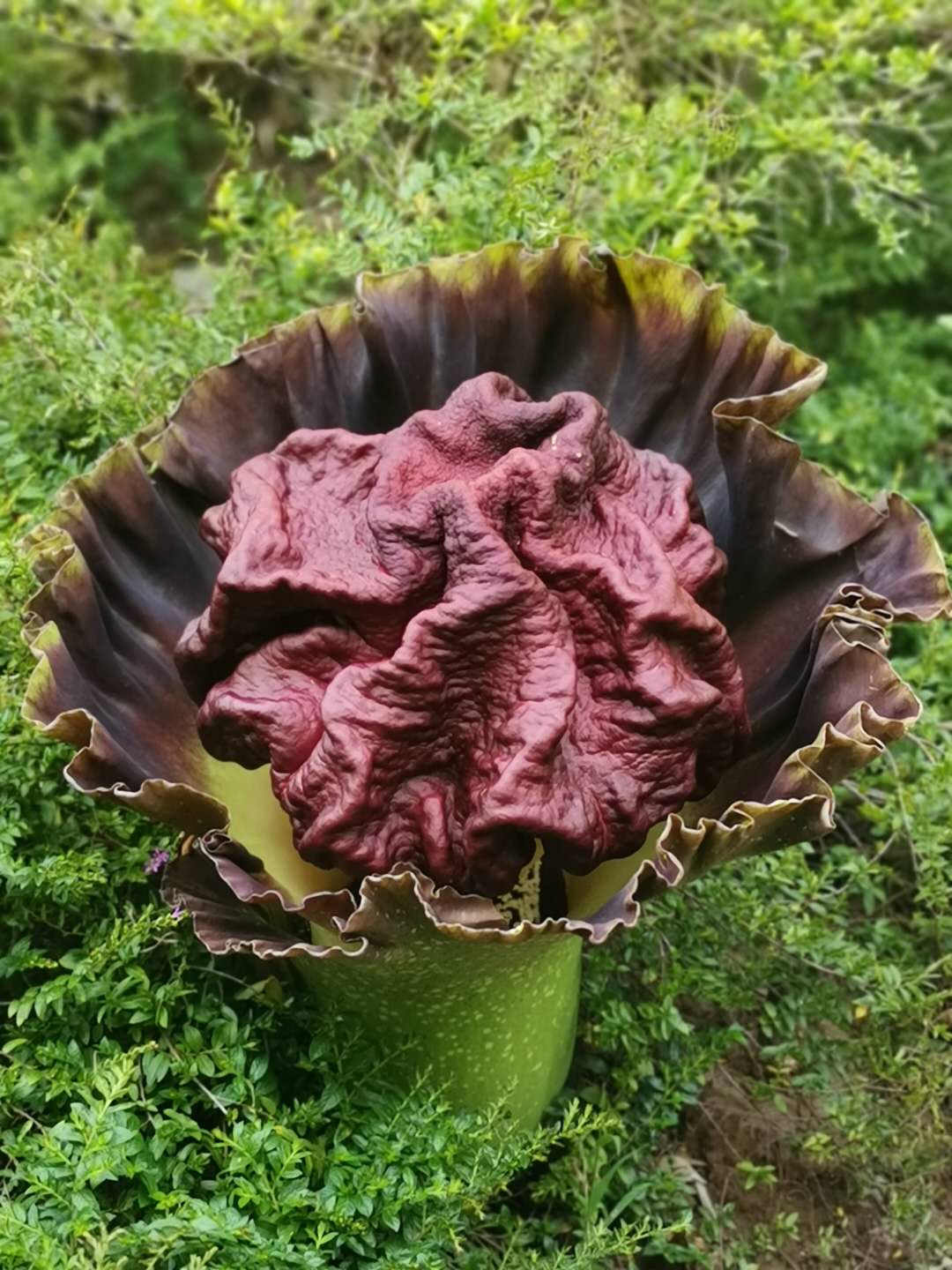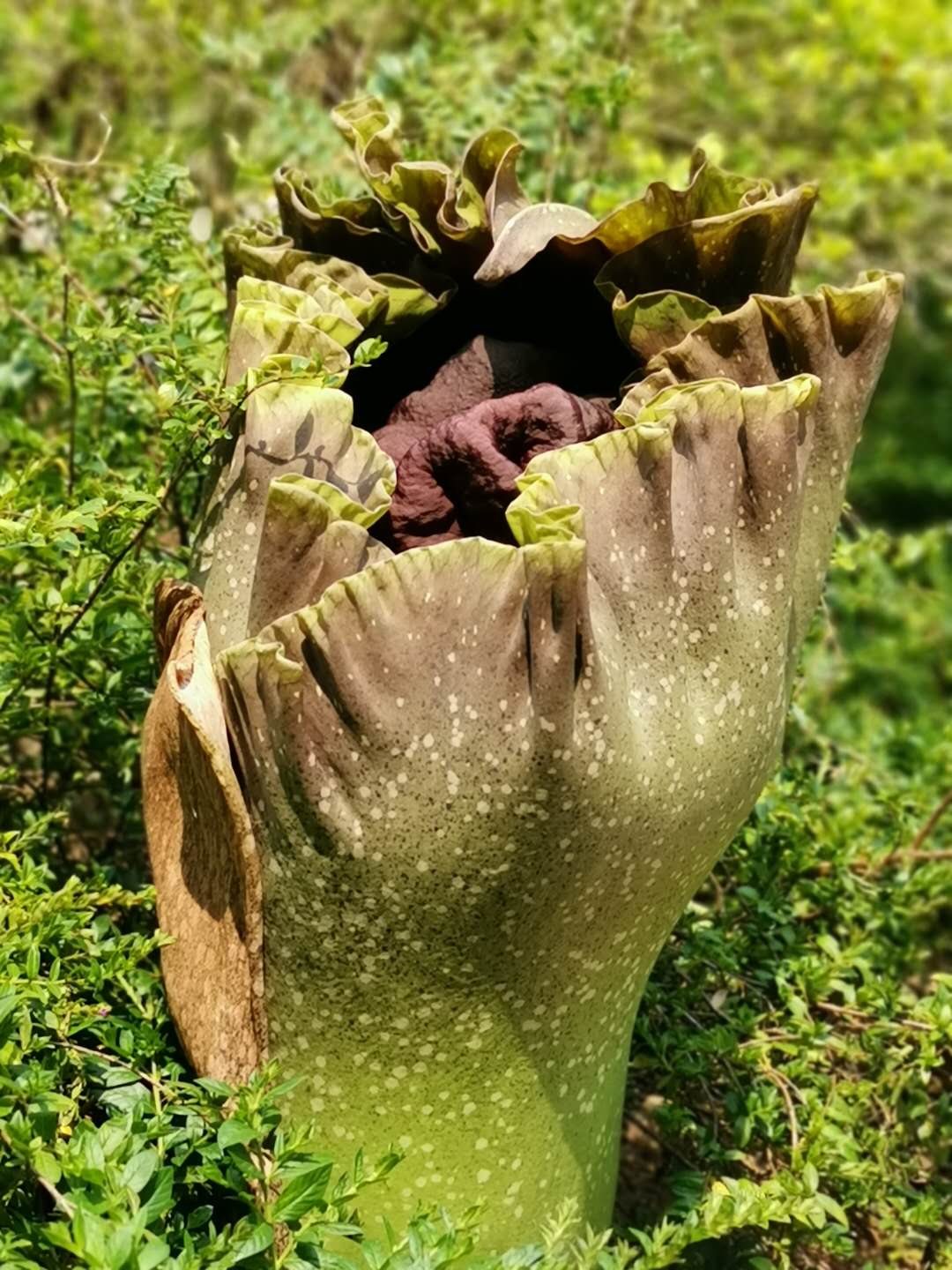Amorphophallus paeoniifolius, the elephant foot yam or whitespot giant arum, is a tropical tuber crop. In middle May, tens of Amorphophallus paeoniifolius come to bloom, presenting a special landscape in Xishuangbanna Tropical Botanical Garden (XTBG).
The plant blooms annually around the beginning of the rainy season. The flower bud emerges from the corm as a purple shoot, and later blooms as a purple inflorescence.
The pistillate (female) and staminate (male) flowers are on the same plant and are crowded in cylindrical masses as an inflorescence. The top part is responsible for secreting mucus that gives off putrid, pungent smell that is used to attract pollinating insects, the middle part of the inflorescence contains staminate, and the base of the inflorescence contains pistillate.
The stigmas of the female flowers will be receptive on the first day of the bloom, when the pungent smell draws pollinating insects inside, and the inflorescence closes, trapping them for a night to allow the pollen deposited on the insect to be transferred to the stigmas.
Later in the second day, the female flower is no longer receptive to pollens, the male flowers start to bloom, and the inflorescence opens again.
It's hard to get close to the flower when it's releasing its perfume. Fortunately, the foul odor only lasts for a few hours after the flower opens.
While the flowers are in bloom they also produce heat. They die after five days.
Amorphophallus paeoniifolius can be used as a viable cash crop due to its huge edible corms which are used as a vegetable which is very popular in South Asia and Southeast Asia.
Flower of Amorphophallus paeoniifolius
The scent distincts a little girl.
Flower of Amorphophallus paeoniifolius
Flower of Amorphophallus paeoniifolius




